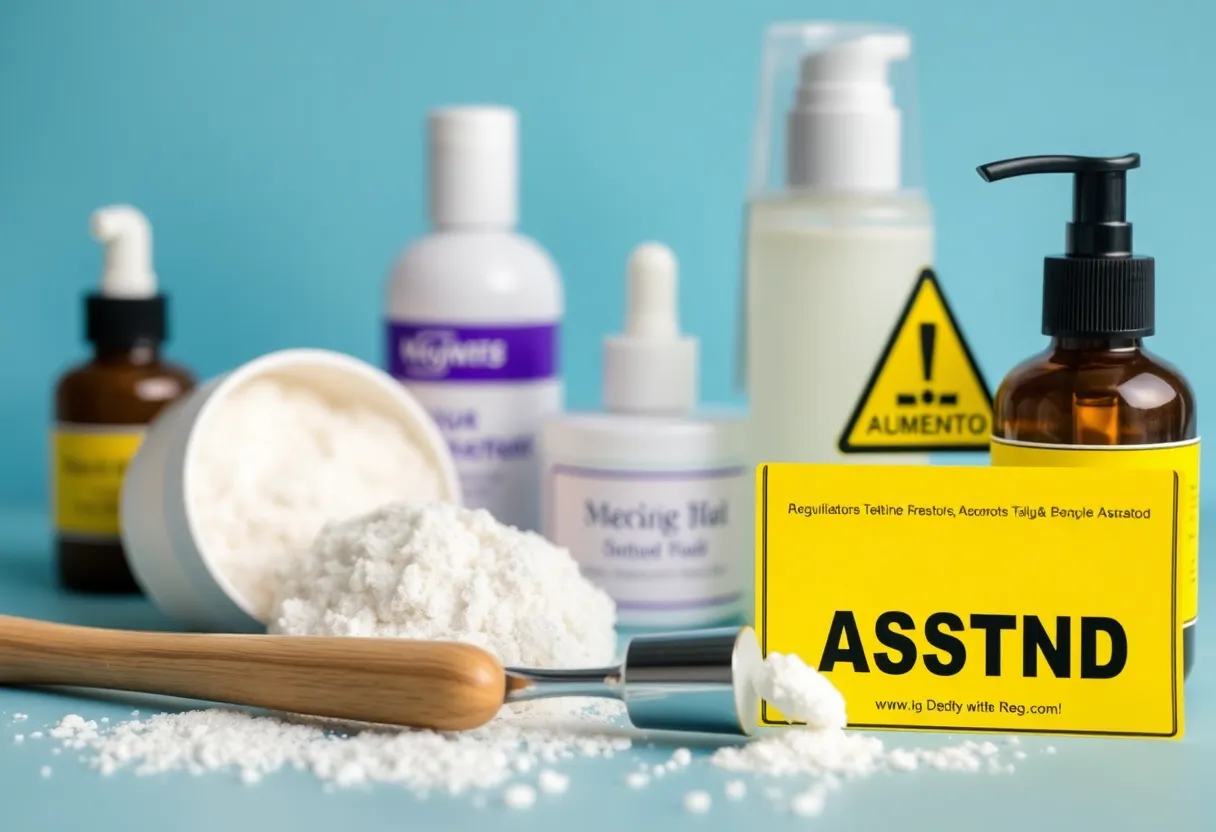News Summary
FDA Proposes Landmark Rule to Tackle Asbestos in Talc-Containing Cosmetics
On December 27, 2024, the U.S. Food and Drug Administration (FDA) took a significant leap towards consumer safety by proposing a stringent new rule that mandates standardized testing for asbestos contamination in talc-containing cosmetic products. This much-anticipated rule comes amid growing concerns about the health risks associated with asbestos—a known carcinogen linked to various life-threatening conditions, including lung and ovarian cancers.
Heightened Testing Protocols
The proposed regulations outline that manufacturers must conduct rigorous testing for each batch of their talc-containing products. This process will involve advanced microscopy techniques, namely polarized light microscopy (PLM) and transmission electron microscopy (TEM). These methods are designed to detect even minute traces of asbestos, which has become a critical requirement given that no safe level of asbestos exposure exists.
The rule’s implications are profound; if manufacturers fail to comply with the testing requirements or maintain appropriate records, their products may be classified as adulterated under federal law, which could restrict their sale.
Background and Legislative Push
The FDA’s latest move stems from legislative actions taken by Congress, which, in 2023, mandated the establishment of new industry standards specifically surrounding asbestos testing. With increasing awareness and concern for consumer safety, this rule aims not only to mitigate the risk of asbestos exposure but also to hold manufacturers accountable for what they put into cosmetic products.
A particular spotlight has been placed on Johnson & Johnson, which is reportedly facing lawsuits from over 62,000 claimants alleging that the company’s talc products have been linked to cancer. The high-profile nature of these legal battles has intensified scrutiny of the entire cosmetics industry.
Contamination Concerns Persist
While laboratory analyses conducted since 2021 have shown negative results for asbestos in over 150 cosmetic samples, the risk of contamination remains a pressing concern, primarily due to the natural association of talc with asbestos deposits—given that talc is commonly mined alongside asbestos. The FDA highlighted the unsettling discovery of asbestos in 9 out of 52 products tested in 2019, underscoring the ongoing risk to consumers.
Manufacturers must choose between testing each batch of talc or depending on a certificate of analysis from qualified suppliers, which must be verified annually. Furthermore, records regarding asbestos testing are mandated to be retained for three years, ensuring that the FDA can access this information upon request.
Consumer Awareness and Safety
The proposed rule is currently open for public and industry comments for a period of 90 days before any final decisions are made. Concerns surrounding the definition of “representative sample” for testing purposes are among the topics the FDA is keen to clarify through this comment period.
Despite the recent push for enhanced regulatory measures, debates about the reliability of the testing methods employed in the industry persist. Questions remain about whether the most sensitive techniques are being utilized consistently. As such, with growing health concerns and emerging legal cases related to talc and asbestos, the cosmetics industry stands at a crucial crossroad.
Looking Ahead
If implemented, this new FDA rule is expected to go into effect 30 days post-publication in the Federal Register and could signal a major shift towards industry-wide compliance in addressing the dire implications of asbestos contamination. Alternatives to talc, such as cornstarch, are increasingly being adopted by some cosmetics companies as a proactive measure against contamination risks. Many companies, including major players like Estée Lauder, claim to use talc tested and certified as asbestos-free.
The FDA’s proposed rule marks a pivotal moment in consumer protection efforts and heralds a future where cosmetic safety could ideally be enhanced while mitigating the risks associated with hazardous substances.
Deeper Dive: News & Info About This Topic
HERE Resources
Veterans Stand to Gain from Asbestos Trusts and VA Benefits
Albuquerque’s Gateway Center: A Toxic Discovery Unfolds
FDA’s New Proposal Seeks to Protect Consumers from Asbestos in Talc Cosmetics
Wildfires Ignite Air Quality Concerns in Los Angeles: A Hidden Threat from Asbestos and Toxic Particles
Velan Inc. Charts a Fresh Path Forward with Major Strategic Moves
FDA Takes a Bold Step to Combat Asbestos in Talc-Containing Cosmetics
Hazardous Aftermath of California Wildfires: Asbestos Concerns on the Rise
Answers to Common Legal FAQs About Mesothelioma
Los Angeles Struggling with Smoke, Ash, and Hidden Dangers from Wildfires
Public Outcry as Boise Delays Critical Hearing on Asbestos-Related Demolition
Additional Resources
- AP News: FDA Proposes Landmark Rule to Tackle Asbestos in Talc-Containing Cosmetics
- Wikipedia: Asbestos
- JD Supra: FDA Proposes New Rule on Testing Talc
- Google Search: Asbestos in Cosmetics
- The Guardian: Asbestos in Makeup and Lawsuits
- Google Scholar: Talc Asbestos Cosmetics
- Cosmetics Design: FDA Moves to Standardize Asbestos Testing
- Encyclopedia Britannica: Cosmetics and Asbestos



















